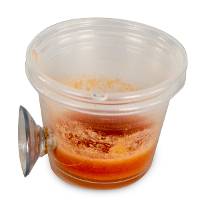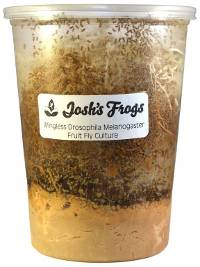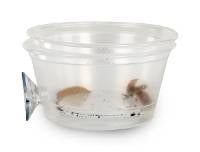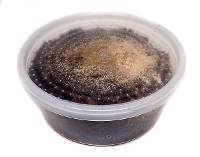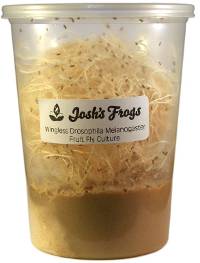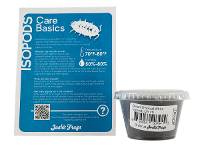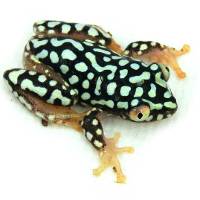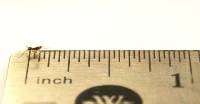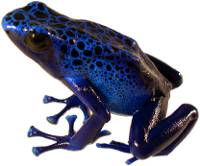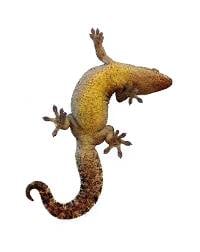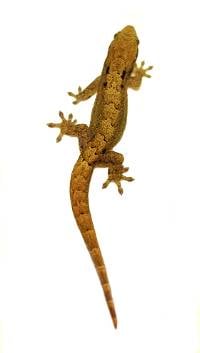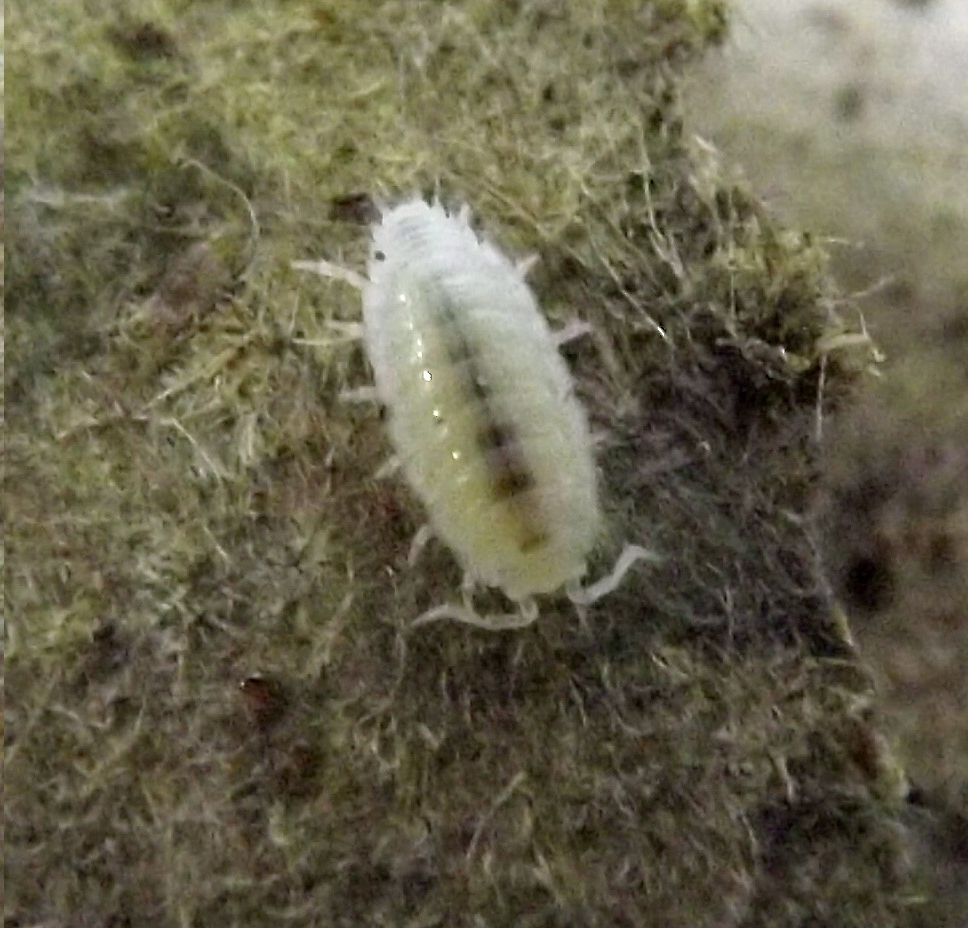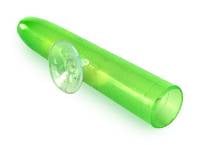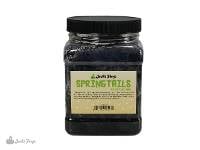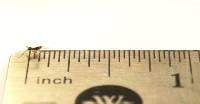Josh's Frogs
Mourning Gecko - Lepidodactylus lugubris (Captive Bred)
Mourning Gecko - Lepidodactylus lugubris (Captive Bred)
$29.99 5.0 out of 5 stars
(29)
5.0 out of 5 stars
(29)About This Product
Defining Characteristics:
- Nocturnal/crepuscular
- Easy to care For
- Easy to breed
- Parthenogenetic
- Can be kept with poison dart frogs
- GREAT IN GROUPS
Name: Lepidodactylus lugubris. Commonly called the mourning gecko or smooth scaled gecko.
Recommended Vivarium Size: Mourning geckos will thrive in an enclosure as small as 5 gallons, but 10 gallons or a 12x12x18 terrarium or larger is recommended for multiple animals. Many people successfully keep these geckos in naturalistic vivaria, housed with larger dart frogs.
Mourning geckos are escape artists, and it's always important to fully secure their enclosure to prevent escapees! At Josh's Frogs, we secure our enclosures by siliconing the lid and blocking the front vents with Pond Wall Substrate Stop.
Temperature (°F): Lepidodactylus lugubris prefer temps in the mid 70s up to the low 80s. Mourning geckos will generally thrive at room temperature, but a low wattage basking light may be needed in cooler climates. Their ideal temperature range is 70-80 degrees.
Measure temps with a digital thermometer.
Humidity: Mourning geckos like it humid and require a humidity of at least 50%. Lepidodactylus lugubris can do well at a humidity of up to 90%, as long as a drier area is provided. Their ideal humidity range is 60%-80%.
Measure humidity with a digital hygrometer.
Size: Adult mourning geckos get up to about 4 inches in length. When they hatch, Lepidodactylus lugubris measure less than an inch!
Age: Lepidodactylus lugubris is capable of living over 10 years in captivity, with reports of 15 years or more in the literature.
All mourning geckos for sale at Josh's Frogs are well started juveniles, and are over a month old.
Feeding: Being smaller geckos, mourning geckos prefer smaller foods. Lepidodactylus lugubris juveniles will readily eat pinhead crickets and 1/8 inch crickets. Adult mourning geckos will devour 1/4 inch crickets, as well as other insects that size. All feeder insects should be gutloaded and dusted with a vitamin/mineral supplement.
At all life stages, mourning geckos will feast on gecko diet mix. This can be fed as a complete diet to mourning geckos, but we prefer to offer them a variety of feeder insects, as well.
Sexing: Sexing mourning geckos is the easiest thing in the world—they're practically all female! Lepidodactylus lugubris is a parthenogenetic species, so females lay fertilized eggs and their offspring are little clones of the parent. There have been rare reports of males, but when they do occur they are usually sterile.
Color/Pattern: Virtually all mourning geckos look similar. Pattern and coloration may vary based on locale. Lepidodactylus lugubris is a tan colored gecko, with small, dark brown to black markings on its back. Mourning geckos have a cream colored belly.
Social Behavior: Lepidodactylus lugubris is fine housed alone or in groups, as long as enough space and hiding places are provided. The geckos will develop a social hierarchy, with the dominant animal(s) breeding.
Mourning geckos can be very vocal when housed together, with the animals making various squeaks and chirps to communicate. Mourning geckos will also display visually to each other, in the form of back arching or tail wiggling. Aggression can sometimes occur, but generally does not result in the injury of an animal.
Adults may eat offspring.
Breeding: Mourning geckos are very easy to breed—they don't need any of our help! Lepidodactylus lugubris is best kept in pairs or groups for breeding—2 females will stimulate each other via pseudocopulation, resulting in 2 gravid geckos. Mourning geckos reach sexual maturity at 8-10 months of age, and will lay clutches of 2 eggs every 4-6 weeks. Eggs take about 2 months to hatch at room temperature.
Natural Range: Mourning geckos are found in the tropical coastal areas of the Pacific and Indian Oceans, including the Maldives, Sri Lanka, India, Myanmar, Thailand, West Malaysia, Vietnam, Japan, Taiwan, China, Indonesia, the Philippines, New Guinea, Fiji, the Australian islands of Cocos atoll, Western Samoa, and Guam. Mourning geckos have been introduced into Nicaragua, Costa Rica, Panama, the Galapagos islands, Colombia, Chile, the Seychelles islands, Mexico, and Hawaii.
History in the Hobby: Mourning geckos have suffered from a severe swing in popularity in the hobby. Lepidodactylus lugubris is seemingly in demand, then they're everywhere, the price goes down, and people get rid of them. Suddenly, they're hard to find, pricey, and in demand again.
Josh's Frogs is dedicated to consistently breeding and offering the species we work with, in order to avoid this boom/bust cycle.
Links of Interest:
- Keeping Mourning Geckos with Dart Frogs - Josh's Frogs blog about housing mourning geckos and dart frogs together
- Mourning Geckos on Wikipedia - great information on their natural (and artificial!) range.
Still not sure if Mourning Geckos (Lepidodactylus lugubris) from Josh's Frogs are the right geckos for you? Read the reviews below and see what other customers are saying!
Shipping
After placing an order containing a live animal, you will receive a scheduling email containing our JotForm scheduling link to schedule your new pet's delivery date.
With this scheduling link, you will be able to schedule your order's delivery up to 30 days in advance. You will be able to choose a date of delivery for Tuesday-Saturday (Saturday arrival depends on the carrier's service availability) with the estimated time of arrival generally being 12pm, or 4:30pm for more rural areas. Overnight lows must be above 40°F to ship directly to you (or above 30°F for FedEx Ship Center pickups) as well as below 90°F by estimated time of arrival.
If you require further assistance, or prefer to talk to one of our Customer Service agents, please feel free to reach out to our [email protected] email or our phone line 1-800-691-8178.
Other Customers Also Bought
Customer Reviews
5.0 out of 5 stars
Based on 29 reviews
Review data
5 star reviews
- 97%
4 star reviews
- 3%
3 star reviews
- 0%
2 star reviews
- 0%
1 star reviews
- 0%
Reviews
Valerie
5.0 out of 5 stars
3 Healthy Geckos
I ordered three mourning geckos from Josh's frogs. Contacting them to arrange a shipping date worked flawlessly and their quick response allowed them to be delivered during a window of cool weather in the summer. They arrived well packaged in individual small containers and all the geckos seemed alert and healthy upon arrival (and are still healthy today). I have all three of them in a 12x12x18 exoterra with live plants. As a caution these are tiny when you get them. Despite the accurate descriptions it is hard to appreciate just how little they are. As such you really need to make sure that all wire holes in the top of the tank are blocked. If you get an exoterra this means not just sliding the switch over the the holes to close it, but blocking the back of the top area as well. That first day one of my geckos escaped, thankfully I saw a second little gecko poking its head out through the hole before more got out. I was able to catch the one who escaped (she was hiding behind the tank). But really, make sure there are no holes they can get out of.
Kairee
5.0 out of 5 stars
So tiny
I got mine a couple months back. When I received them they were so tiny I didn't expect them to be so little. They're definitely fun to watch when they're out of hiding. And they make little squeaking sounds that is so cute.
ick
5.0 out of 5 stars
5 stars amazing gecko good quality
got to of these little
ick
5.0 out of 5 stars
5 stars amazing gecko good quality
got to of these little
Kristin
5.0 out of 5 stars
Great Geckos
I got 2 of these girls last December and they are growing up fine and doing great. Today I got 3 more can't wait to get them. They are so cute fun little Geckos I enjoy them a lot. Thank you Josh's Frogs!!
Showing 1 to 5 of 29 results

